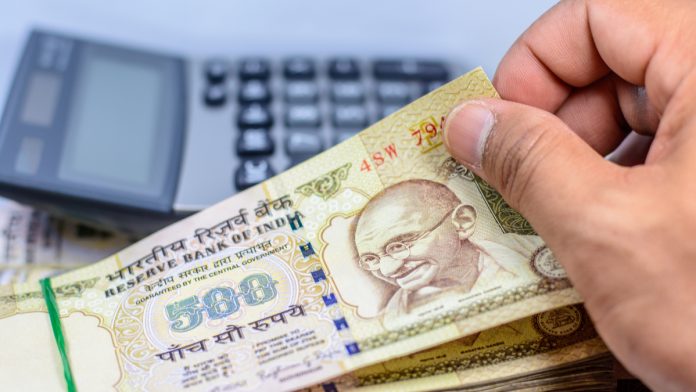- Indian Rupee (INR) trades lower as risk sentiment dives
- Surging covid cases is boosting fears the global economic recovery will be derailed
- US Dollar (USD) rises across the board on safe haven flows amid covid fears & political jitters
- Q3 GDP data in focus tomorrow
The US Dollar Indian Rupee (USD/INR) exchange rate is on the rise again on Wednesday. The pair settled -0.3% lower on Tuesday at 73.62, towards the lower end of the daily traded range. At 10:15 UTC, USD/INR trades +0.4% at 73.89.
Risk aversion is dominating the financial markets as covid cases surge in Europe and the US. Germany and France are considering national lockdowns to bring the rising covid cases back under control. French President Emmanuel Macron is weighing up a one-month national lockdown which could start as soon as Thursday. Germany is also mulling over this option.
Fears are growing that tighter lockdown restrictions will derail the very fragile global economic recovery. Investors are shunning riskier assets such as stocks and also riskier currencies such as the Indian Rupee. Meanwhile, demand for the safe haven US dollar is soaring.
The Indian Sensex closed -1.5% whilst the Nifty shed 1.3% with foreign investors net sellers, adding pressure to the Rupee.
In addition to covid jitters, caution over the US Presidential elections and the absence of additional US fiscal stimulus is also adding to the risk off sentiment, boosting the greenback. With just days to go until the US election is extremely unlikely that Congress will agree to additional fiscal stimulus before the 3rd November voting day.
The US national polls show that Joe Biden is in the lead. However, these are the same national polls that failed to predict Trump’s win four years ago.
There is no high impacting US data for investors to focus on today. Instead sentiment and covid headlines will continue to drive the greenback ahead of Q3 GDP data due to released tomorrow.
Q3 GDP growth is expected to increase by a record 30% or more in the third quarter after plunging -31.4% on an annualised basis in the second quarter. However, this big concern is about what is coming in Q4.





